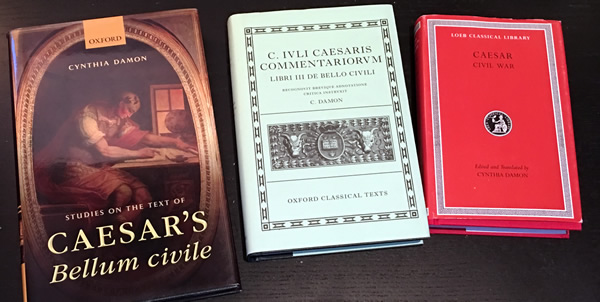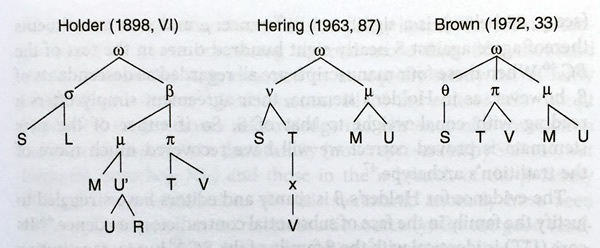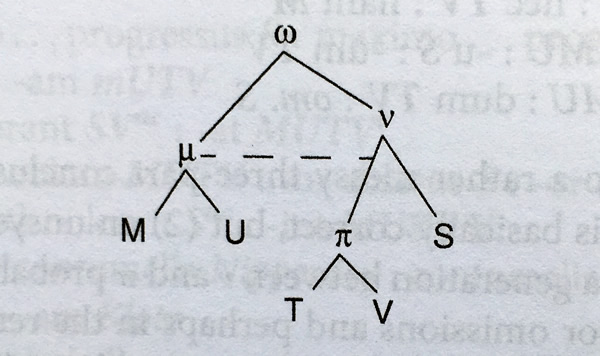Cynthia Damon has produced a fresh English edition of Caesar’s Civil War that was decades (or centuries!) in the making, depending on how you look at it.

Like most ancient texts, we do not have a pristine copy of Caesar’s Civil War handed down to us from antiquity. Instead, we have a slew of medieval manuscripts, copied and edited by scribes over the centuries, and now stored in archives across the world. The late Virginia Brown went through the herculean task of reviewing, dating, and documenting all known manuscripts of the Civil War. In this effort, she sought to determine the source of more than 200 copies. ((Virginia Brown, “Caesar, Gaius Julius” in Catalogus Translationum et Commentariorum, eds. F. Edward Cranz and Paul Oskar Kristeller (Washington: Catholic University of America Press, 1976), 3:92.))
Through a game of medieval telephone, there are a number of things that can change in copied text. While the notion of such changes may offend our sense of historical purity, these differences can help detectives such as Virginia Brown and Cynthia Damon determine if manuscript A was used to create a copy of manuscript B, and so forth. For example, if two separate manuscripts use the same abbreviations or misspellings, then one was likely used to produce the other.
The differences in manuscripts can include
- Alterations
- Errors
- Omissions
- Misspellings, including inversions of letters, missing letters, repetition
- Abbreviations
- Errors from abbreviations, which were outmoded or simply different
- Method of dividing books, such as using headers, numbers, or a giant letter
- Diving the text, such as 14 books instead of 3
- Rearrangement of the text
- Glossing over text, laziness
- “Improvements,” corrections by multiple hands on the same manuscript
- Mergers between manuscripts
In reviewing the differences and similarities between manuscripts, the goal is to get to the oldest version of the text. This is by no means a new process and multiple historians made their own attempts at Caesar’s Civil War before Virginia Brown. In textual criticism, scholars use stemmas (family trees) to trace the lineage of major versions of manuscripts. Below you can see how Brown’s stemma varied from 2 previous attempts at tracing the transmission of Caesar’s Civil War. ((Cynthia Damon, Studies on the Text of Caesar’s Bellum civile (Oxford: Oxford University Press, 2015), 17, figure 1.)) These stemmas simplify a tedious and laborious effort, but they all have the goal of getting to a single source.

Unfortunately, Virginia Brown passed away before she completed her research, but she handed her work to Cynthia Damon who finished it and pieced together a new Latin edition, which she chronicled in Studies on the Text of Caesar’s Bellum civile (2015). After sifting through 32,577 words of Caesar’s Civil War across more than 200 manuscripts spread out over half a millennium, Damon has concluded that “one copy survived from antiquity into the Middle Ages and was copied at least twice some time early in the Carolingian period.” ((Cynthia Damon, Studies on the Text of Caesar’s Bellum civile (Oxford: Oxford University Press, 2015), 14, 14n37.))

From that single source, Damon traced 1,000 disagreements across hundreds of medieval manuscripts of the Civil War and reconstructed a single version of the text. ((Cynthia Damon, Studies on the Text of Caesar’s Bellum civile (Oxford: Oxford University Press, 2015), 55.)) As a result, we now have a new Latin version of the Caesar’s work where the number of spots of lost or uncertain text is down to a few dozen. ((Cynthia Damon, Studies on the Text of Caesar’s Bellum civile (Oxford: Oxford University Press, 2015), 14.)) And with that, Damon has produced a fresh English translation, the first based on this new Latin version.
